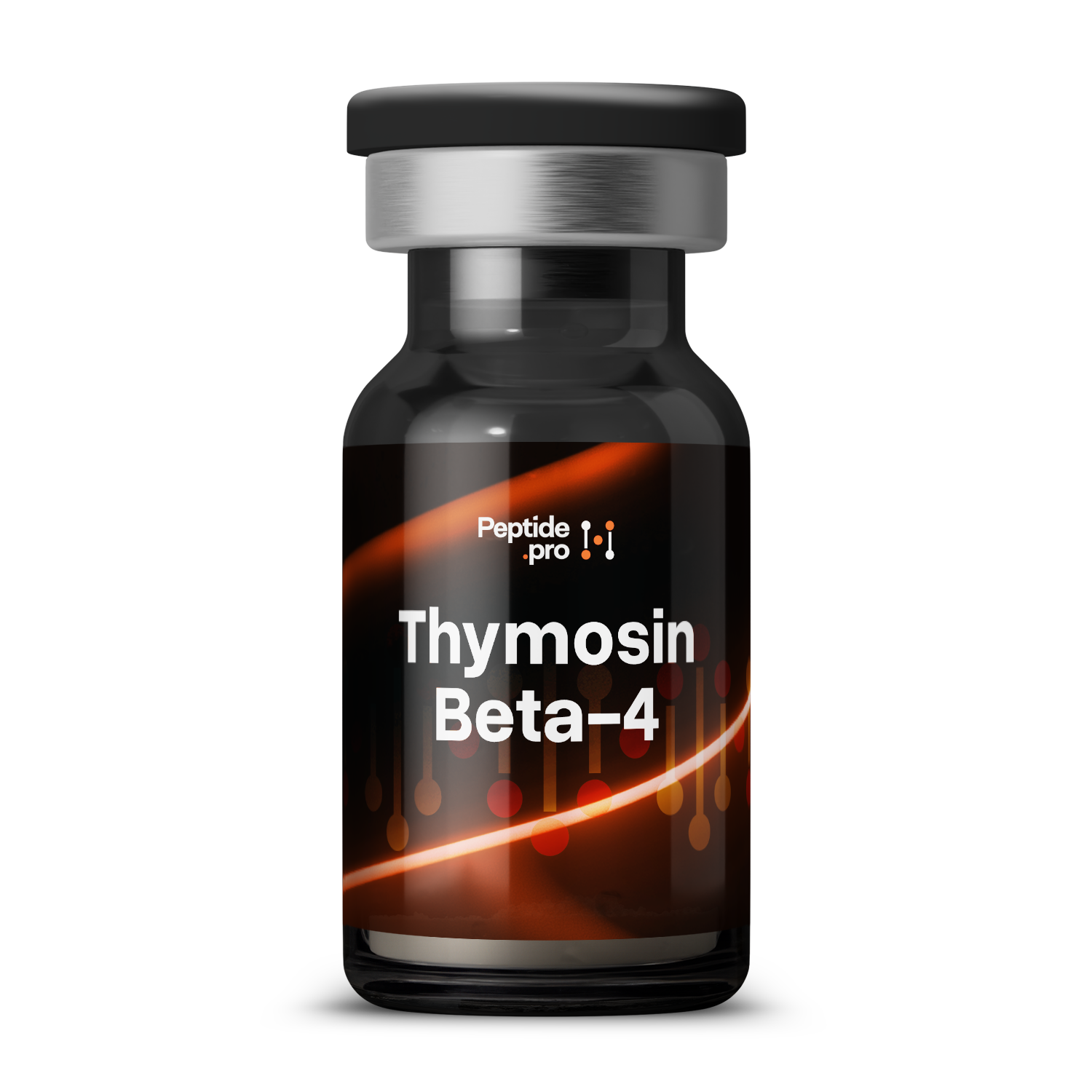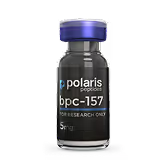Compound Overview
About the product
The peptide sequence contains a free N-terminus and no non-natural modifications. Research-grade material is synthesized by solid-phase peptide methods and purified to ≥95 % purity, with identity confirmed by mass spectrometry.
Thymosin β-4 promotes cell migration by binding to actin, a structural protein, enabling cells to move into damaged areas. It also upregulates vascular endothelial growth factor (VEGF), which enhances new blood-vessel formation (angiogenesis). These combined actions accelerate tissue repair and reduce inflammation in human injury models.
Thymosin beta-4 benefits are being studied for their potential to improve healing of skin wounds, tendon and ligament injuries, and ulcers. In early human case reports, topical or injectable use shortened healing time, reduced pain, and improved mobility. It is also under investigation for treating chronic non-healing ulcers and corneal injuries.
In limited human use, reported side effects are mild and include transient injection-site redness or itching. No systemic adverse events or hormonal changes have been documented. Long-term safety and effects on cell proliferation beyond healing periods remain to be established.
Thymosin β-4 is produced by solid-phase peptide synthesis on a resin support. After chain assembly, it is cleaved, deprotected, and purified by preparative HPLC to research-grade purity. Analytical HPLC and mass spectrometry verify sequence integrity and purity.
Thymosin β-4 is classified for investigational research use only and is not approved by the FDA, EMA, or other major regulators. It cannot be prescribed or sold as a therapy. Research institutions obtain it under investigational-new-drug protocols.
Human case reports have used 2–5 mg subcutaneous or topical applications 2–3 times per week for up to several weeks, tailored to injury severity. No standardized dosing guidelines exist.
- Do use only under approved research protocols with ethical oversight.
- Do monitor wound-healing progress and any signs of abnormal tissue growth.
- Don’t extrapolate animal findings directly to human treatment.
- Don’t combine with other investigational growth factors off-protocol.
- Q: How soon are healing benefits seen?
- A: Users report reduced inflammation and improved mobility within one week.
- Q: Can it be applied topically?
- A: Yes; both topical and subcutaneous routes have been used in research.
- Q: Is it safe for repeat use?
- A: Short-term use appears safe, but long-term effects remain unstudied.
For research use only. Not approved for medical use.


